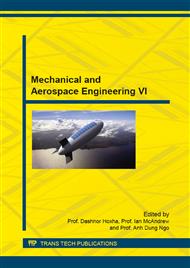p.531
p.536
p.541
p.546
p.551
p.556
p.565
p.571
p.576
End of Life and Beginning of Life Thermal Analysis of a Micro Satellite
Abstract:
Satellites with passive thermal control system use thermal coatings, secondary and first surface mirrors and paints to maintain the temperatures of their electronic equipment within operating temperatures. Satellite coatings are exposed to harsh space environments like ultraviolet radiation (UV) and atomic oxygen (AO) that cause thermal degradation. As nature of the space environment, degradation of the surface paints and coatings cause increase in temperatures of the equipment in time. Thermal designer must consider the thermal degradation of the coatings and paints and optimize the radiator sizes of the satellite at Beginning of Life (BOL) and End of Life (EOL) of the satellite in order to maintain the temperatures of equipment within their safe operation limits. For this analysis, a micro-class satellite using passive thermal control with surface paints and interface conductance within each equipment has been studied. The satellite top surface (+Z) faces the earth and bottom surface (-Z) faces deep space. The lateral sides of the satellite are covered with honeycomb solar panels and top and bottom surfaces are covered with white paint which act as satellite radiator. The satellite orbit has been considered as 700 km Sun-Synchronous Low Earth Orbit. In this analysis BOL and EOL thermo optical properties have been used to predict the satellite temperatures before and after degradation of paints. Thermal analysis have been performed and predicted temperatures obtained by using THERMICA thermal analysis software.
Info:
Periodical:
Pages:
551-555
Citation:
Online since:
October 2015
Authors:
Keywords:
Price:
Сopyright:
© 2015 Trans Tech Publications Ltd. All Rights Reserved
Share:
Citation:


